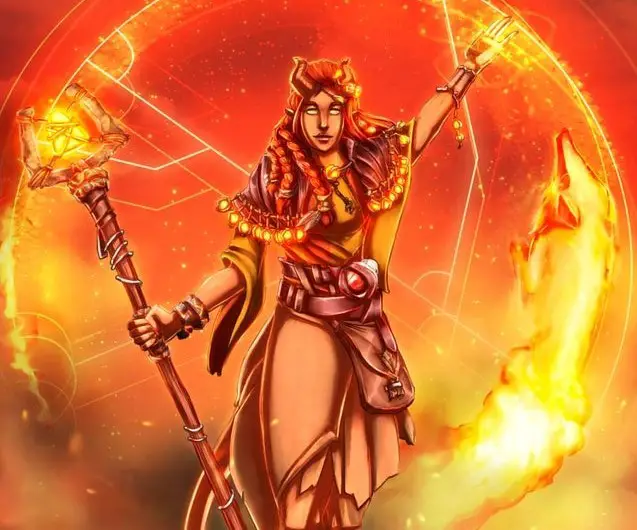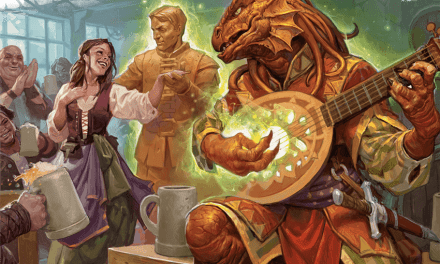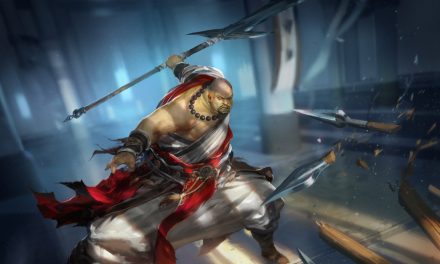The Circle of Wildfire Druid sees the infinite possibility of fire. After all, creation and destruction, life and death… these are all part of the natural cycle of things.
Bonding with the primal force of fire, these Druids clear their path to create the potential for new life to rise from the ashes.
Do you have what it takes to harness the scorching but life-giving power of fire?
Then this is for you!
This is the guide to the Circle of Wildfire Druid in D&D 5e!
What is the Circle of Wildfire Druid?
Creation requires destruction to exist. The two are locked in an eternal dance within the natural order of life. After all, the destruction that is caused by a forest fire enriches the soil for new growth to take place.
Few understand this delicate balance as well as the Circle of Wildfire Druid.
The Circle of Wildfire Druid acts with the force of fire: capable of destruction, warmth, and rebirth.
In addition to their potent magical abilities, these Druids also summon spirits of living flame to aid them and their allies on their adventure.
With the raw and primal strength of fire at their command, the Circle of Wildfire Druid combines healing and destructive magic to maintain order.
The Circle of Wildfire Druid appears in Tasha’s Cauldron of Everything alongside the Spores Druid and Stars Druid subclasses.
Role in the Party
The Circle of Wildfire Druid focuses heavily on their abilities as a spellcaster.
With dips into both healing and damage spells, these Druids are most comfortable in the back or middle of the party in combat.
If the party doesn’t need some extra healing, the Circle of Wildfire Druid can cast powerful spells to damage enemies while also using their bonus action to have their Wildfire Spirit attack as well.
If the party does need healing, the Druid is able to tend to their allies while still dealing some damage to the enemies.
As we’ll cover in the next section, the Wildfire Spirit is the most important ability for the Circle of Wildfire Druid.
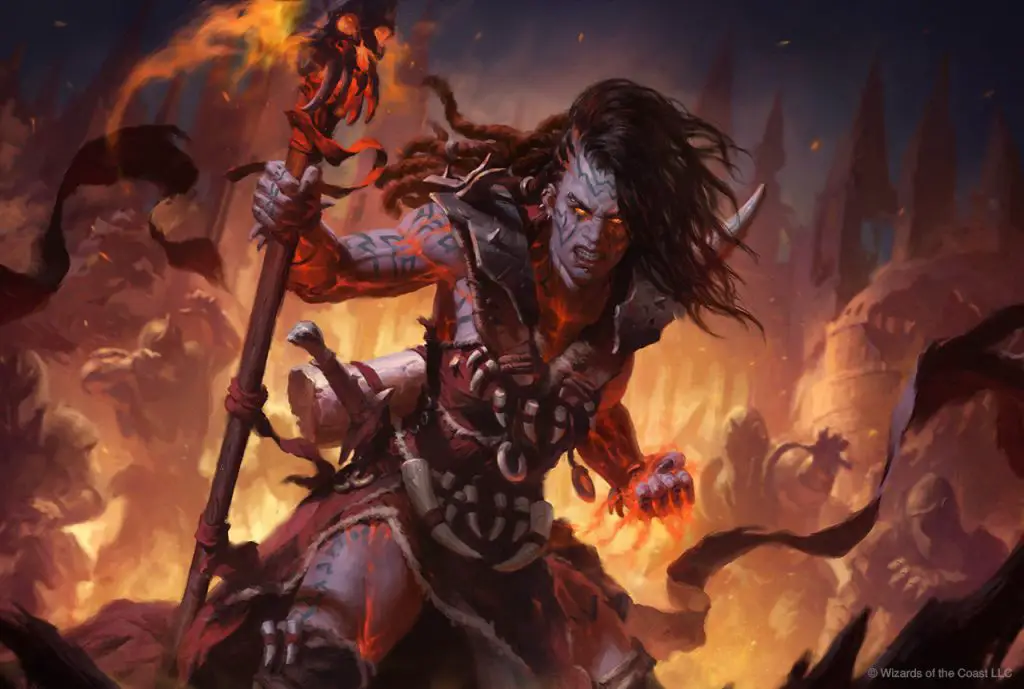
Circle of Wildfire Druid Abilities
Just as the Circle of Wildfire Druid respects fire as a tool for both creation and destruction, their abilities embody this same quality.
Let’s take a closer look at each of the abilities gained by these Druids and see how they play.
Circle Spells
As a subclass with a heavy focus on the Druid’s ability as a spellcaster, Circle of Wildfire Druids gain special extra spells.
These spells are always prepared and don’t count against the number of spells that the Druid can prepare each day. Any of these spells that don’t appear on the Druid spell list are still considered to be Druid spells.
| Druid Level | Spells |
| 2 | Burning Hands, Cure Wounds |
| 3 | Flaming Sphere, Scorching Ray |
| 5 | Plant Growth, Revivify |
| 7 | Aura of Life, Fire Shield |
| 9 | Flame Strike, Mass Cure Wounds |
Thoughts on the Circle of Wildfire Spell List
At 2nd level, the Circle of Wildfire Druid gains the Burning Hands and Cure Wounds spells. Burning Hands will serve you well enough in the early game, but always having healing prepared with Cure Wounds is very nice to have.
At level 3, your Druid gains the Flaming Sphere and Scorching Ray spells.
Both of these spells deal some pretty powerful damage that will last you well. As a concentration spell that deals damage each turn, Flaming Sphere in particular can be devastating if used cleverly.
5th level sees the Circle of Wildfire Druid getting the Plant Growth and Revivify spells.
Plant growth is a commonly underrated utility spell. Being able to make enemies have to spend 4 feet of movement for every 1 foot they move means that you can shut down enemy melee attackers.
Furthermore, Druids typically can’t bring someone back to life until they can cast Reincarnate. Being able to have access to Revivify at all times is incredibly handy!
When your Circle of Wildfire Druid hits level 7 they gain access to Aura of Life and Fire Shield.
Aura of Life is pretty forgettable until you find yourself in situations where it’s useful. This helps you pick up multiple allies who are at 0 hit points while also protecting them from abilities favored by undead.
Fire Shield is a great way to punish enemies who hit you with melee attacks. Because the shield can be used for either warmth or cold, it’s a nice and versatile option to have in your back pocket.
Lastly, level 9 sees your Druid gaining access to the Flame Strike and Mass Cure Wounds spells.
These are both decent. Flame Strike has a so-so area-of-effect and deals some respectable fire and radiant damage. Though, to be honest, a Fireball would be more useful (or at least only take a 3rd level spell slot…) in virtually every situation.
Mass Cure Wounds is always nifty in a pinch, but such pinches (like several downed party members) could just as easily be picked up with something more economic like Mass Healing Word.
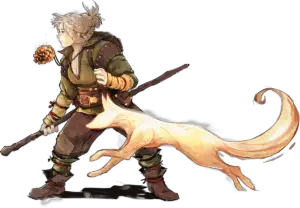
Summon Wildfire Spirit (Level 2)
This ability is the most important aspect of the Circle of Wildfire Druid.
Much like some other Druid subclasses (like the Circle of Stars or Circle of Spores options), the Circle of Wildfire Druid has less use of their Wild Shape ability. It’s still available to them, but it is usually better saved for summoning the Druid’s Wildfire Spirit.
The Wildfire Spirit acts as a type of familiar for the Druid. Using an action and a use of their Wild Shape, the Circle of Wildfire Druid summons the spirit. It appears somewhere that the Druid can see within 30 feet of them.
Not content to show up without making an entrance, the Wildfire Spirit causes each creature within 10 feet of it to take 2d6 fire damage if they don’t make a Dexterity saving throw.
You choose how the Wildfire Spirit looks. It might look like a beast made of fire or it could resemble more of a burning humanoid shape.
The Wildfire Spirit takes its turn immediately after yours on the same initiative count.
If you do not use a bonus action to give it a command, it takes the Dodge action on its turn. If your Druid is incapacitated, the Wildfire Spirit does not need commands to take other actions.
Your Wildfire Spirit stays out for an hour unless it is reduced to 0 hit points, you summon another one, or you die.
While the spirit is not particularly tough and deals so-so damage with its ranged attack, it is incredibly mobile. Being able to fly and teleport your entire party around the battlefield is very cool!
You Might Like: The Best Druid Spells by Level in D&D 5e!
Enhanced Bond (Level 6)
The first buff involving your Wildfire Spirit comes at level 6 with the Enhanced Bond feature.
With this ability, both your destructive and healing spells get improved if your Wildfire Spirit is out.
Whenever you cast a spell that deals fire damage or restores hit points and your Wildfire Spirit is summoned, roll a d8. You gain a bonus equal to the number rolled to one damage or healing roll of the spell.
In addition, when you cast a spell with a range other than self, the spell can originate from you or your wildfire spirit.
So, for example, let’s say that your Wildfire Spirit is on the battlefield.
You cast Burning Hands and roll a d8 for your Enhanced Bond feature. You get a 5 on that. Rolling 3d6 damage for the Burning Hands spell, you deal 14 damage to the enemy plus the extra 5 for a total of 19.
Alternatively, let’s say that you cast Healing Spirit while your Wildfire Spirit is out.
Again, you roll a d8 for your Enhanced Bond and get another 5. You choose which of the 1d6 healing charges from Healing Spirit gets an extra 5 added to it. The 5 does not apply to all 10 charges of the spell.
Last but not least, the Enhanced Bond with your Wildfire Spirit lets you have spells that you cast originate from your Wildfire Spirit if they have a range other than “self.”
This adds a huge amount of extra positioning and range options to help your spellcasting!
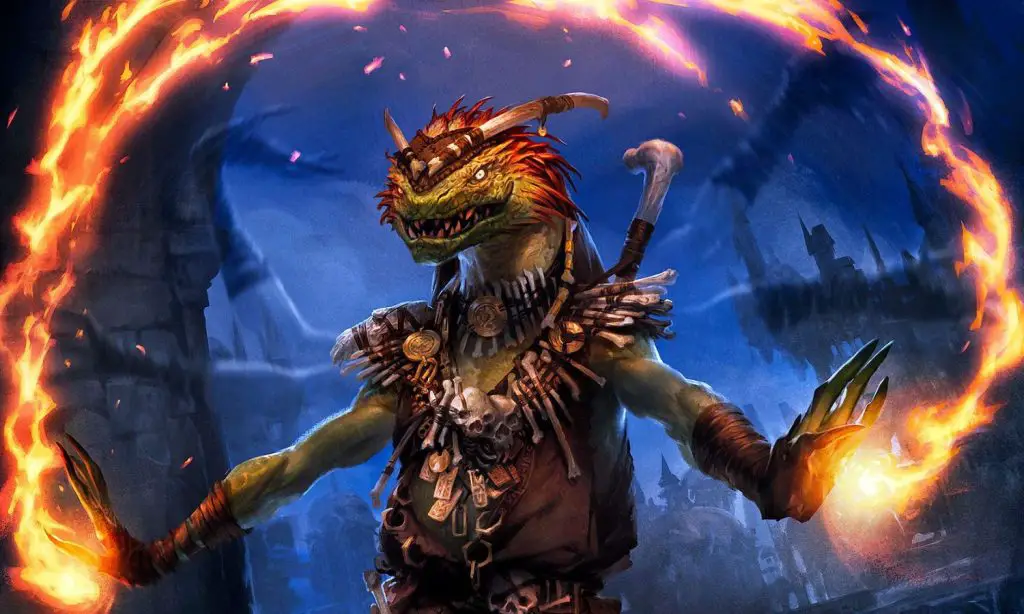
Cauterizing Flames (Level 10)
At level 10, the Circle of Wildfire Druid gets the Cauterizing Flames ability.
This ability is incredibly cool and introduces some interesting tactics for your group.
When a small or larger creature dies within 30 feet of you or your wildfire spirit, a harmless spectral flame springs forth in the dead creature’s space and flickers there for 1 minute.
When a creature you can see enters that space, you can use your reaction to extinguish the spectral flame there and either heal the creature or deal fire damage to it. The healing or damage equals 2d10 + your Wisdom modifier.
You can use this reaction a number of times equal to your proficiency bonus, and you regain all expended uses when you finish a long rest.
At 2d10 plus your Wisdom modifier worth of damage, this ability hits pretty hard. But I have a hard time seeing anything other than a zombie walking into the flame. Any intelligent enemy would avoid it. Even beasts would have enough survival instinct to not walk into it.
Though it’s worth noting that there is no save for this. If an enemy moves into the space, you use your reaction and deal the damage.
While your allies can certainly see the flame and position themselves for some quick healing, getting value out of the damage part of this ability seems tricky to me.
Your best bet would be to have your front-line party members shove the enemies into the flame for you to activate it. If you can pull this off, it’s some very solid damage. But, otherwise, this is perhaps best just viewed as an ability for extra healing.
Blazing Revival (Level 14)
The capstone feature of the Circle of Wildfire Druid is gained at 14th level.
When it seems like all is lost and you fall to zero hit points, that spark of hope is enough to bring you right back to consciousness!
If your Wilfire Spirit is within 120 feet of you when you are reduced to 0 hit points and thereby fall unconscious, you can cause the spirit to drop to 0 hit points. You then regain half your hit points and immediately rise to your feet.
Once you use this feature, you can’t use it again until you finish a long rest.
Blazing Revival is the very definition of a clutch ability.
Even better, this doesn’t use your reaction or anything!
Sure, it isn’t coming without cost. After all, your Wildfire Spirit is pretty important to basically everything you do! But it’s much better to use another Wild Shape and resummon your Wildfire Spirit than to start making death saving throws!
This ability works once per long rest, but if you’re needing it more than that then there may be other problems… Just saying…
If possible, you’ll want to make it a point to rest up pretty quickly after a fight that makes you use this feature.
At least get a short rest so that you can get your Wild Shape uses back. After all, you only have 2, and you’ll want them to bring your Wildfire Spirit back out!
But this is definitely a useful and very visual capstone feature. Being able to spring back up and very likely give your party some much-needed heals is totally worth it!
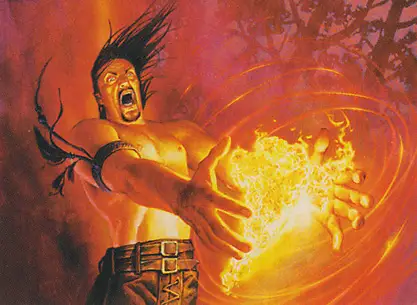
Connections
Because of the duality of the Circle of Wildfire Druid subclass, there are some very interesting ways that you can incorporate your character’s background and personality into this subclass.
Your character may have been drawn to one property (creation or destruction) of the Wildfire at first only to come to learn that the other property is equally as important in the grand scheme of things. With this as a type of guiding philosophy, the character joins the party as a type of proving ritual for their Circle.
If you want to take a Fey route, you could be a Summer Eladrin who has somehow crossed over to the Material Plane. Guided by curiosity, your powers as a Circle of Wildfire Druid and your view of the creation-destruction cycle only add to your mystique.
Perhaps your Druid is a young member of a powerful Circle that serves to protect a Phoenix. In their pursuits, they have learned its ways in both fiery vengeance and warm healing.
While you don’t have to play to the duality concept with your character, it is a big opportunity if you are so inclined!
Is the Circle of Wildfire Druid Good?
Taking the approach of a combination damage and healing Druid with a fiery “pet” is very different from what I had originally imagined for this subclass.
That said, I really appreciate the Phoenix theme that this class has going for it. It certainly fills a unique niche in party compositions!
In any game, I often worry about classes or characters that focus on using two different mechanics equally.
As the proverb goes, “if you chase two rabbits, you’ll catch none.”
I mean, on one hand, the “Combination Pizza Hut and Taco Bell” sounds like a really good idea. On the other hand, I have been to a “Combination Pizza Hut and Taco Bell,” and they didn’t do either thing particularly well.
Fortunately, the Circle of Wildfire Druid avoids this trap.
My only complaint about this class is admittedly small, but… Why don’t they have the Fireball spell?!
You’ll also want to make sure you pick up the Elemental Adept feat if you choose this subclass.
Unsurprisingly, you’ll be relying heavily on fire damage which just happens to be fairly commonly resisted by enemies. Elemental Adept will help you get around that and focus on setting your foes ablaze!
Related: Ranking Every Druid Subclass in D&D 5e!
Conclusion – Circle of Wildfire Druid in D&D 5e
So that’s about it for the Circle of Wildfire Druid!
I want to give a HUGE shoutout to u/ArnNormand and his wife for letting me use his art of her character as the cover image for this article!
Check out his DeviantArt to see more of his awesome work! He does take commissions so reach out to him if you’re looking for some sick character art!
Is this a subclass that you can see yourself playing? What kind of Wildfire Spirit would you summon?
Let’s talk below in the comments!
Also, don’t forget to check out our Complete Druid Guide for D&D 5e! It covers everything you need to fully channel the power of nature on your adventures!

